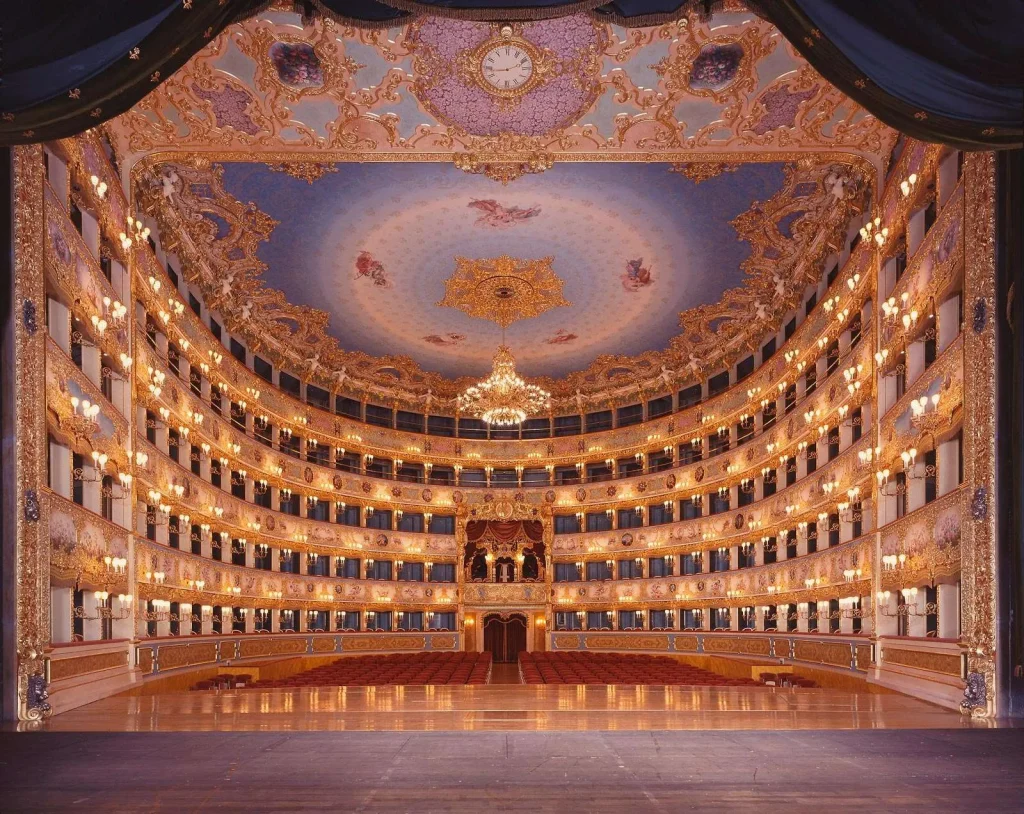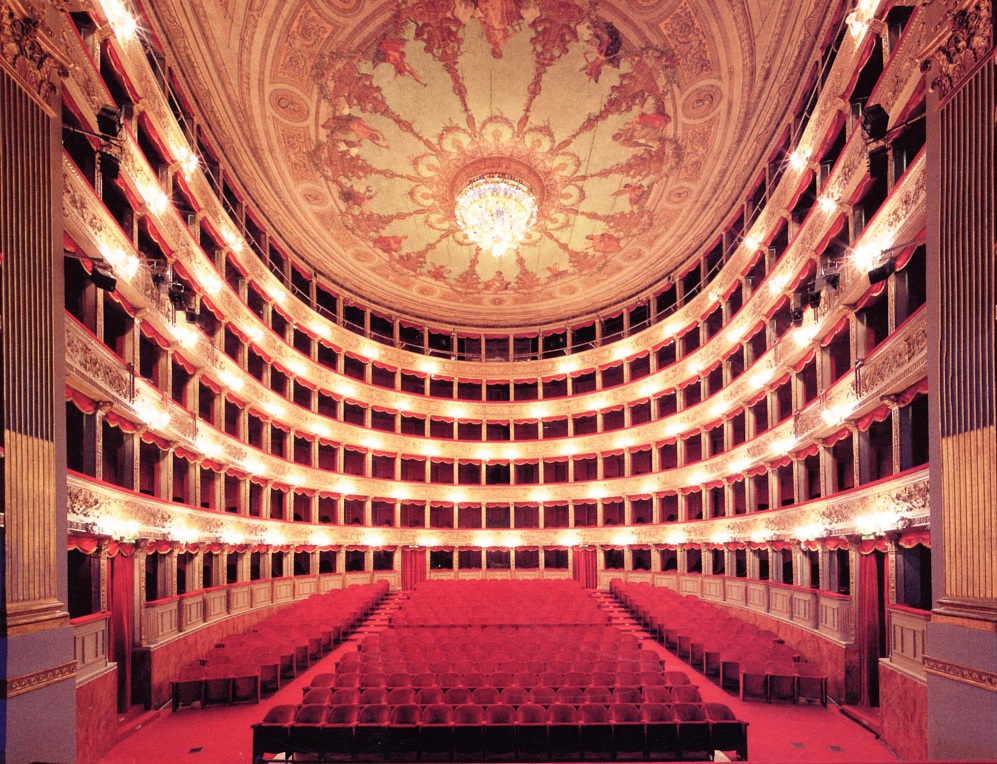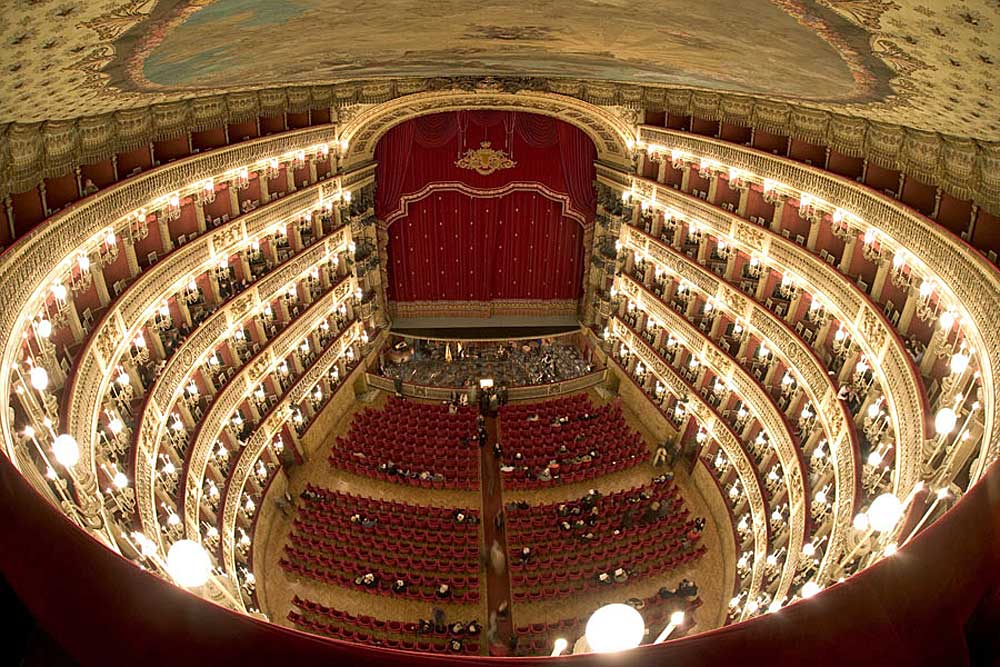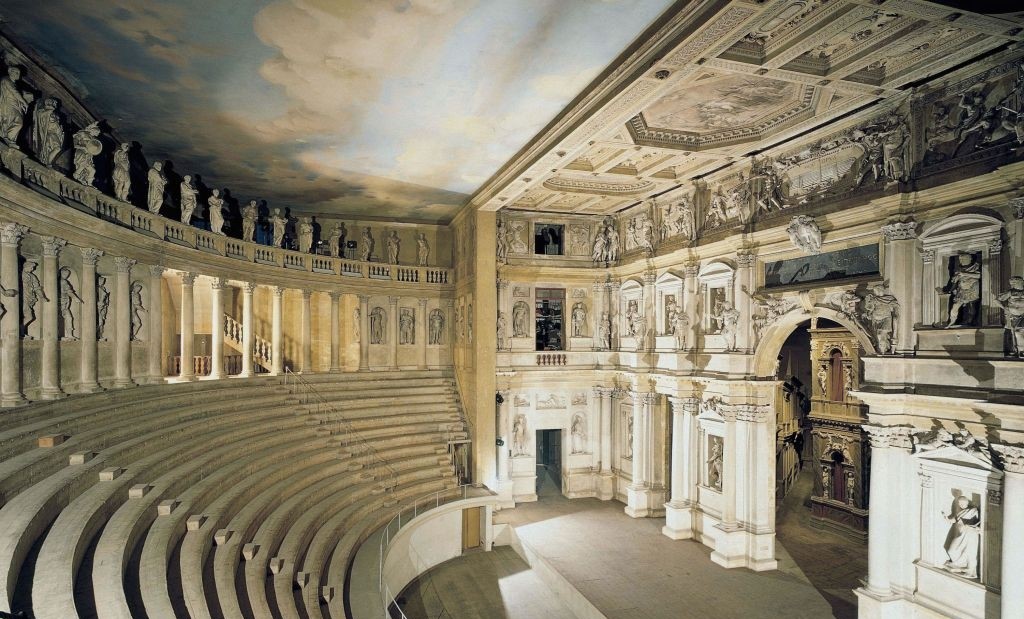Italy has since its beginnings been considered the cradle of culture expressed in all its forms: art, music and theatre.
These are but three sides of the same coin that have allowed Italy to become a cultural reference point throughout the world.
Today, Initaly takes you on a tour of some of the most beautiful and historically rich theatres.
Built by the most famous Italian architects and at the behest of the ancient dynasties that ruled Italy, these theatres have been performed by the greatest artists of international renown.
Let’s set off together and discover them!
- La Fenice Theatre
- Opera Theatre
- La Scala Theatre
- San Carlo Theatre
- Olympic Theatre
La Fenice Theatre: risen from the ashes

A name that leaves no room for the imagination: La Fenice.
Fenice in Venice is one of the Italian theatres that has literally risen from the ashes several times.
It was first inaugurated in May 1772 on the occasion of the Feast of the Sensa, a festivity celebrated in memory of Christ’s ascension to heaven.
La Fenice is one of the most famous theatres in the world because it has been and still is the venue for premieres by artists such as Rossini, Bellini, Verdi, Stravinsky, Kagel, Guarnieri and Perocco.
Having risen twice after respective fires, it was rebuilt even more beautiful than before.
The theatre was designed by the Venetian architect Gian Antonio Selva, then following a fire in 1836, the architects Tommaso and Gian Battista Meduna restored it by adapting the original design.
In 1996 a new fire put the Fenice under severe strain, which only managed to return to light in 2003 with its third inauguration.
For that occasion there was a live television broadcast with the presence of the President of the Republic and with Maestro Riccardo Muti conducting.
The neoclassical façade is characterised by a pronaos supported by four Corinthian columns, above which is a balustrade. Inside the niches are engraved representations of Dance and Music, with the Phoenix in the centre.
The theatre hall, which could seat 1500 spectators, is decorated with stuccoes, paintings and gilded carvings. Inside the theatre is a permanent exhibition in honour of Maria Callas, dedicated to her years in Venice.
Opera Theatre: one of the theatres as a temple of the Renaissance

The second of the five theatres we present in this article is the Teatro dell’Opera in Rome.
Commissioned by Domenico Costanzi, the theatre was built by architect Achille Sfondrini, who built it between 1874 and 1880 in neo-Renaissance style, paying great attention to acoustics.
The Opera House bore the name Costanzi until it was purchased by the governor of Rome.
The inauguration on 27 November 1880 took place with Rossini’s opera Semiramide.
Originally, the theatre had three tiers of boxes, an amphitheatre and a gallery, all surmounted by a dome frescoed by Annibale Brugnoli.
In 1926, the Municipality of Rome bought it and started renovation works, entrusted to architect Marcello Piacentini, who added a further tier to the three existing ones and installed an exceptional crystal chandelier, the largest in Europe.
With the proclamation of the Republic, new restoration work was undertaken, again under Piacentini’s guidance, which gave the façade a 20th-century style. Over the years, the Opera House gained international prestige thanks to the presence of world-famous performers such as Caruso, Gigli, Maria Callas, Domingo and Pavarotti. Today, the Rome Opera House has a capacity of 1650 seats.
Teatro alla Scala: a neoclassical gem

We could not fail to mention one of Italy’s largest and most prestigious theatres: La Scala in Milan.
This extraordinary piece of architecture was inaugurated in 1778 with Antonio Salieri’s opera ‘L’Europa’.
Commissioned by Empress Maria Theresa of Austria, it was built by the neoclassical architect Giuseppe Piermarini on the ruins of the Ducal Theatre and the Church of Santa Maria alla Scala.
The hall is configured in the shape of a horseshoe adorned with neoclassical decorations.
To favour superior acoustics, a wooden vault was preferred, almost as if to create a natural sounding board.
Above the proscenium is a clock indicating the hours and minutes supported by two female figures in bas-relief.
Starting in 1812, the Teatro alla Scala became the home of melodrama and ballet, graced by prestigious names such as Rossini and many others.
During World War II and particularly in August 1943, Milan was besieged by bombing that hit and destroyed the roof, the vault and other areas of the theatre.
A reconstruction was therefore necessary, which also saw the installation of a new chandelier that became a copy of the destroyed 19th-century jewel.
At present, the predominant tones are gold and ivory. An intricate system of stairs, known as the ‘pincer staircase’, connects the foyer to the corridors leading to the boxes.
Piermarini’s initial design was extended in 2000 by the Swiss Mario Botta, and now includes six floors of boxes and galleries, with a capacity of 2030 spectators.
Botta also added a larger stage tower, while engineer Franco Malgrande created a stage mechanism capable of raising the scenes up to 4 metres above the standard stage level. Since 1951, by decision of the artistic director at the time, Victor de Sabata, the opening of La Scala has been on 7 December, the day of Saint Ambrose, the patron saint of Milan.
Teatro San Carlo: the oldest opera house in the world

In any true ranking where history, art and culture are mentioned, one cannot fail to mention the city of Naples.
The San Carlo, founded in 1737, is one of the most important theatres in the world and above all the oldest opera house.
Ordered by King Charles III of Bourbon, it was built next to Piazza del Plebiscito and in fact next to the Royal Palace of the Bourbons.
The construction of this imposing theatre was assigned to architect Giovanni Antonio Medrano. In 1809, architect Antonio Niccolini took charge of its restoration, first of all modifying the façade in neoclassical style and giving the theatre the typical characteristics of a temple.
In 1816, a fire devastated the theatre, leaving only the outer walls intact.
In less than a year, Antonio Niccolini himself oversaw its reconstruction, which remained faithful to the original design with a horseshoe-shaped structure with five tiers of boxes and a gallery, as well as a large royal box.
In the centre of the ceiling is a painting of Apollo presenting Minerva with the world’s greatest poets, the work of the Cammarano brothers.
In addition to hosting great musicians and conductors, this famous theatre has seen the performance of numerous ballets.
It was at the San Carlo that the oldest ballet school in Italy was founded in 1812.
Following the Second World War, art also had difficulty restarting, but this was not the case in Naples where, achieving yet another first, the San Carlo was the first to reopen in Italy.
The San Carlo theatre was also included by Unesco in the list of World Heritage monuments.
Teatro Olimpico: the oldest permanent indoor theatre

Founded in 1585, the Teatro Olimpico in Vicenza holds a record among the theatres of the world as the oldest permanent Italian theatre of the modern era.
Designed by Palladio, the Teatro Olimpico celebrated the grandeur of Vicenza’s nobility, while today it hosts numerous opera reviews and jazz concerts.
The distinguishing feature of this Italian opera house is its magnificent architecture: it is a construction made of wood and stucco, yet it is inspired by the ancient style, Roman amphitheatres and temples, with columns, staircases and no less than 95 statues in classical style, following the tradition of Vitruvius’ studies during the Renaissance.
Crossing the threshold of this theatre is tantamount to being fascinated by a vast optical illusion, which gives the sensation of walking into the sinuosities of an open-air arena – a cunning stratagem that visually expands a space that is actually quite limited.
It is included in the UNESCO World Heritage list and is open to be visited all year round.
What was once a privileged place reserved for the wealthy society is now a meeting point of man and culture accessible to all.
Now it’s your turn, run and discover the most important theatres in Italy!
If you want to stay up-to-date with InItaly news, subscribe to our Whatsapp channel https://whatsapp.com/channel/0029VaEUGAa5kg6yPOev5O1N
Also visit our website: https://in-italy.eu/?fbclid=IwAR0RQu7uozsvge41TLKATB-YAAbt2fem-kxwG_rW_jQK776UbYpBOiB69p4


